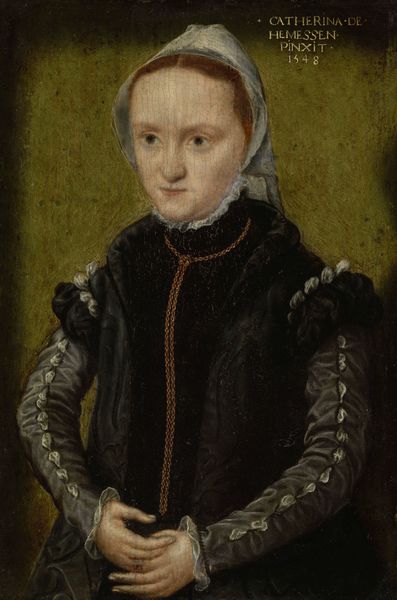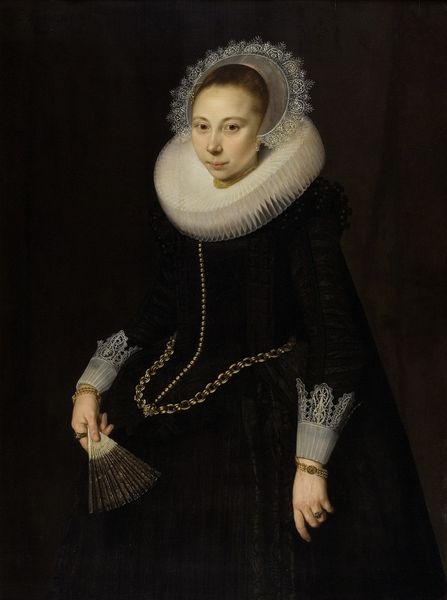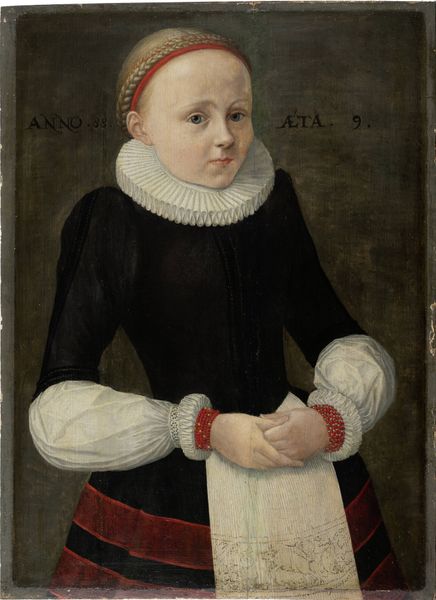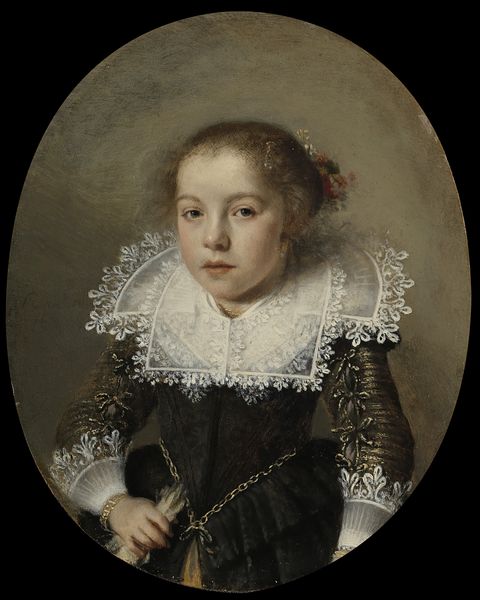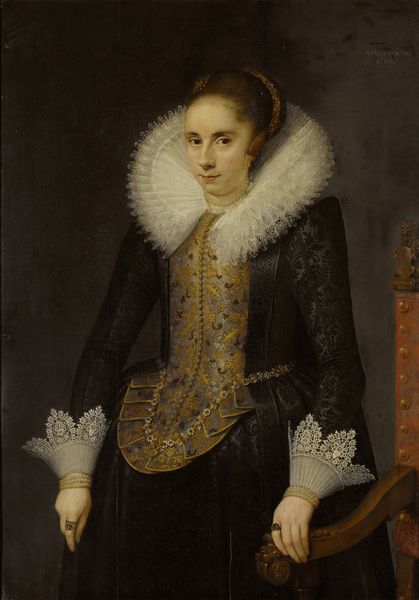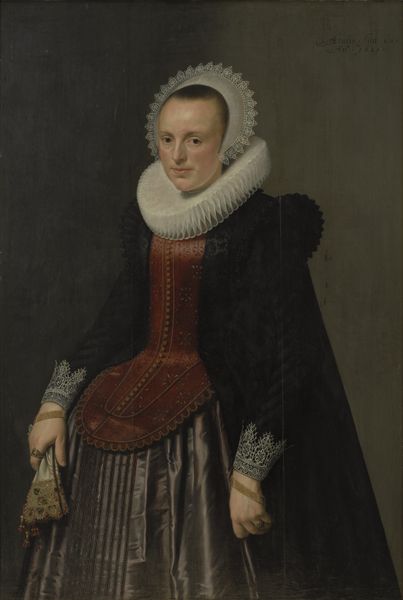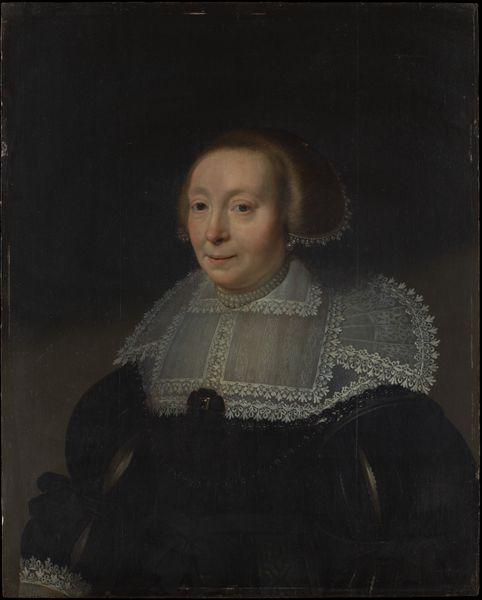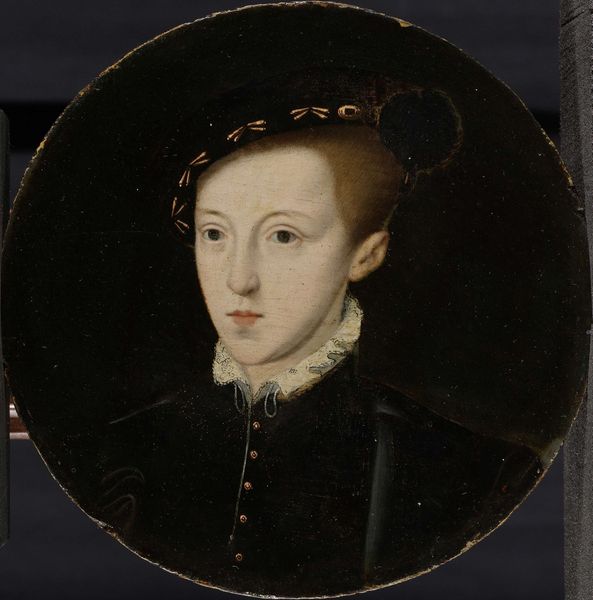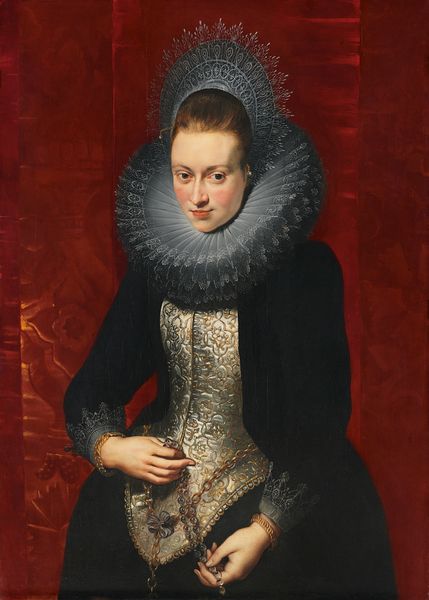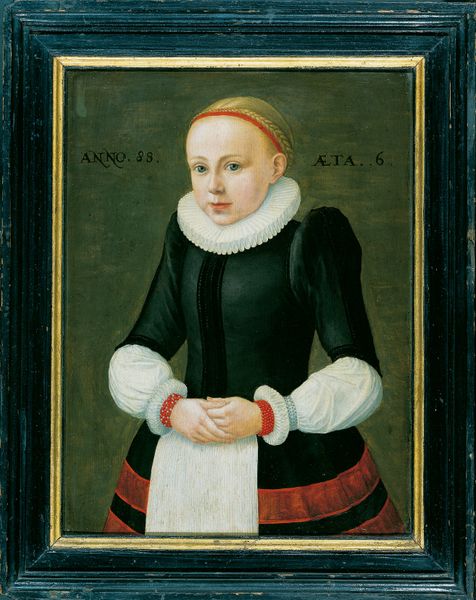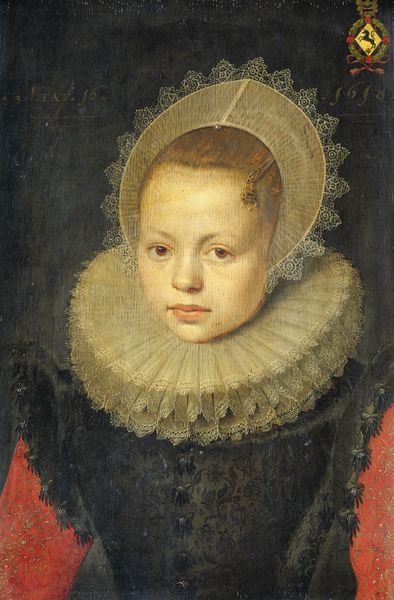
painting, oil-paint
#
portrait
#
painting
#
oil-paint
#
figuration
#
11_renaissance
#
13_16th-century
#
italian-renaissance
Dimensions: 29.0 x 21.0 x min. 0.2 cm
Copyright: Public Domain
Editor: Here we have "Portrait of Margarethe von Holzhausen," painted anonymously in 1565. It's an oil painting, and there's something very formal and almost severe about the composition. What are your thoughts on this piece? Curator: Consider the materiality of this painting. The artist, though anonymous, carefully constructed this image through the labor-intensive process of oil painting, building layers of meaning through the very application of pigment. We see wealth displayed, not just in Margarethe’s attire, but in the sheer access to costly materials like oil paint and perhaps ultramarine blues lost in time. The portrait isn't simply about capturing likeness; it's about demonstrating status via access to goods and craftspeople. How does that level of display affect your understanding? Editor: That makes sense. It's a very constructed image, clearly about presenting a certain status. So, you're seeing the labor and the expense of materials as key to the portrait's meaning? Curator: Precisely. Think of the social context: a young girl, likely of considerable means, being presented to the world through the skilled hands of an artist and the value of the imported pigments. The very act of commissioning such a portrait signifies wealth and the social standing of the family. And consider, too, the skilled labor invested in the costume. We often forget that fabrics, laces, jewels—all bespoke products created through skilled (often women's) labour -- speak volumes about consumption and class. What’s she holding in her hands? Editor: Looks like a fur muff and maybe a small cloth or handkerchief. Curator: Again, the material worth and skilled labour inherent in crafting something so soft as the muff or delicately embroidered as that scrap of linen. In a portrait of a young woman, the emphasis on making and skill becomes doubly important. Editor: It completely reframes how I look at Renaissance portraits. Seeing them as documents of production and labor adds a new dimension. Curator: Absolutely! Examining art through the lens of material culture can unveil the hidden social dynamics embedded within the artwork, challenging traditional views focused solely on aesthetics.
Comments
No comments
Be the first to comment and join the conversation on the ultimate creative platform.
